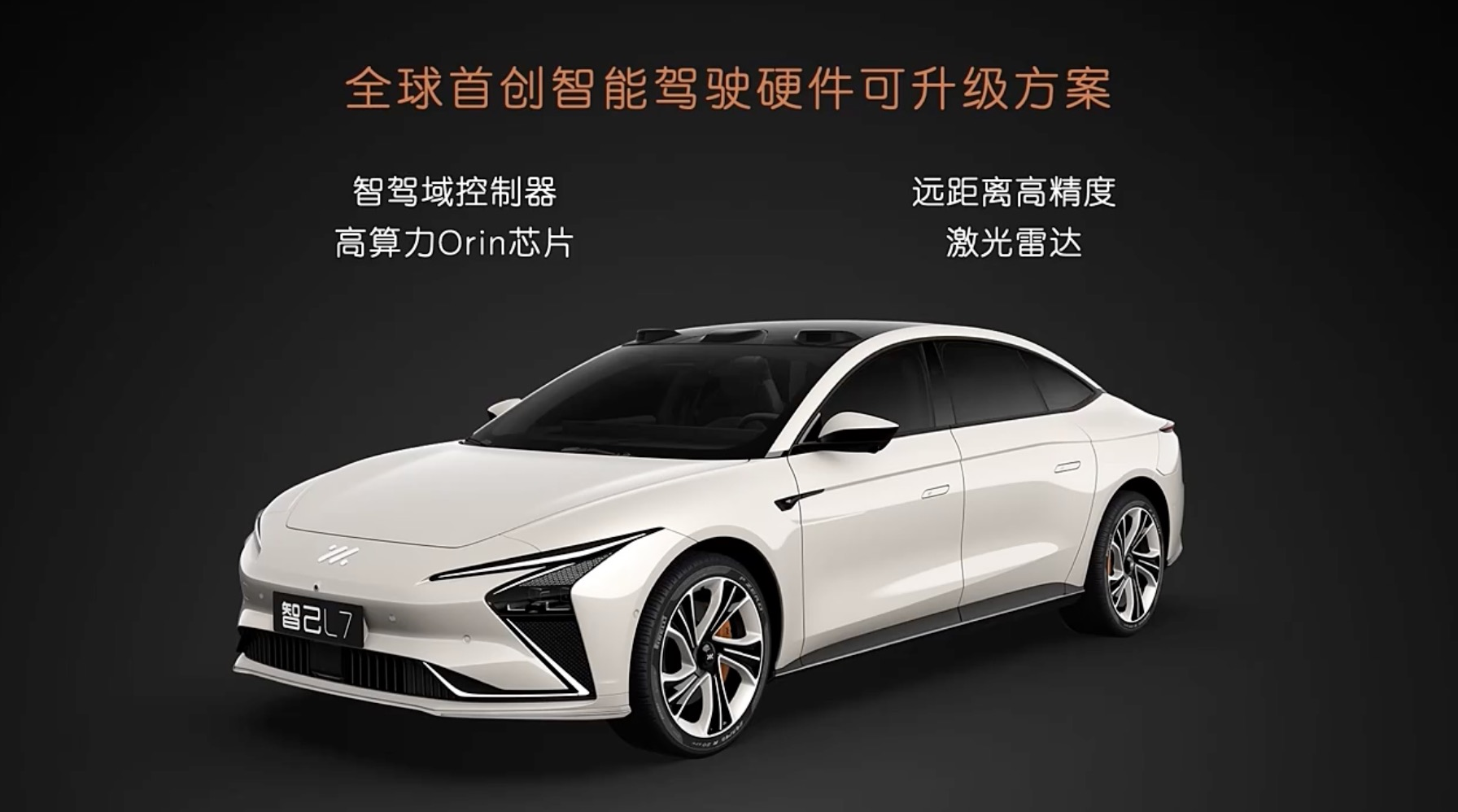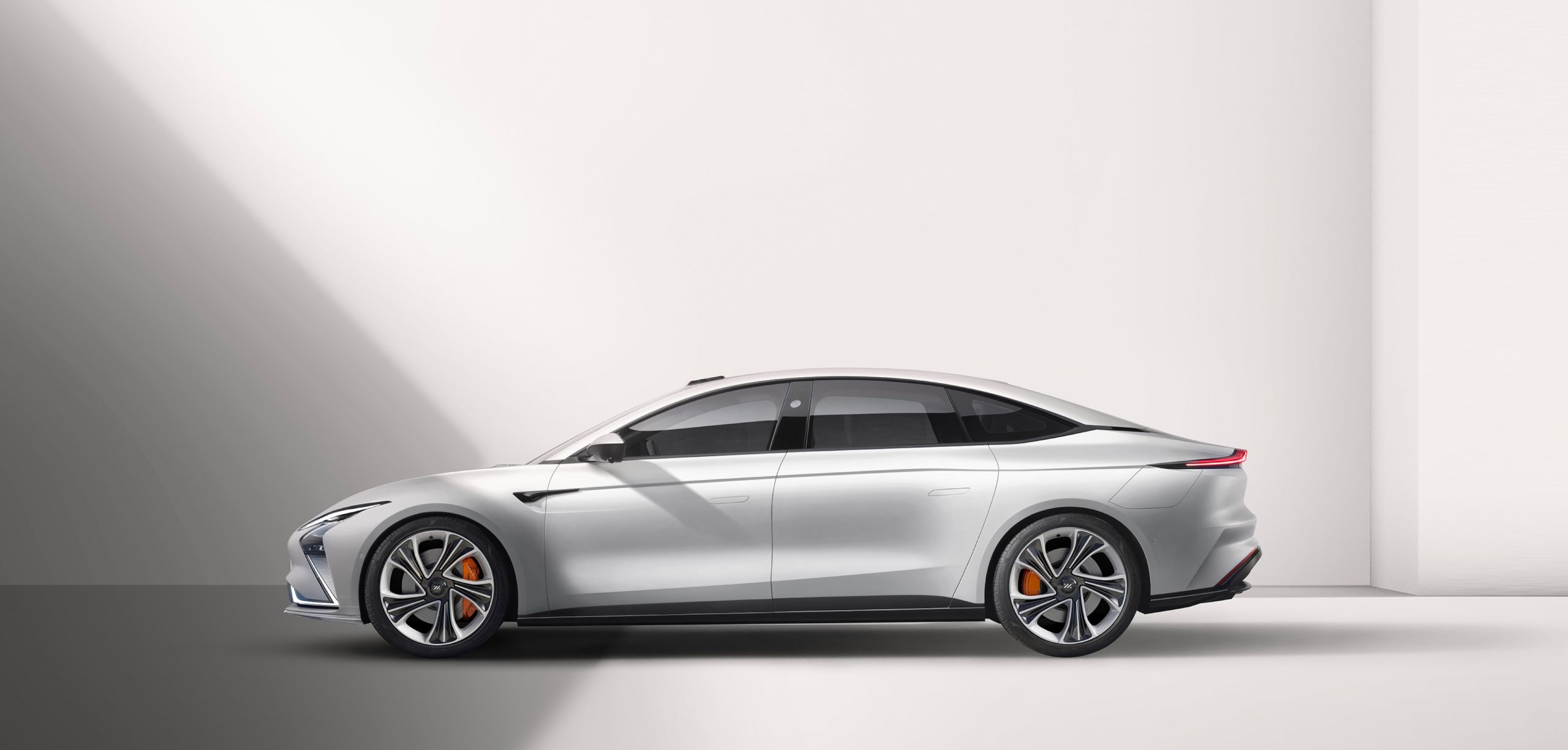Intelligent Driving
SmartCar proposes a concept called “more like a human” intelligent driving, which directly points out the major defects of most current assisted driving systems — they’re too mechanized. The complex traffic scenes bring a huge number of long-tail problems that cannot be fundamentally solved. Based on cooperation with Momenta, SmartCar designs a data-driven model called the Flywheel to efficiently solve these long-tail problems. SmartCar constructs a unified algorithm architecture by using massive data, closed-loop automation, a data-driven data toolchain in order to implement efficient algorithm iteration.
In terms of data-driven, SmartCar has launched the world’s first full-process data-driven product, which has improved the performance of each module compared to a rule-based one. SmartCar also claims that its real-world road-tested mileage per day is in the tens of millions, although there may be a bug since SmartCar didn’t specify a unit of measurement for those millions. As for data processing, SmartCar has a cluster of ten thousand GPU cards to efficiently process large amounts of data. Closed-loop automation refers to L4 and L2+ sharing the same software platform, thus connecting data and technology flow.
Scenario Intelligence
Social Capabilities
Continuous Evolution Capabilities
Diversified Co-creationIn response to the cut-in scenario, IM compared itself with Tesla Model 3 and claimed to be able to detect cut-in vehicles 800 milliseconds earlier than Tesla. We still need to conduct actual tests to determine the specific recognition and response speed. Therefore, we can only analyze from the perspective of vehicle hardware architecture at present. There are a total of 5 forward-facing vision cameras on the Tesla, with 3 of them located on the windshield and the other two on the side B-pillars. These 5 cameras have a resolution of 1.2 million pixels. The IM L7 uses the same camera layout as Tesla for oblique forward vision, which is also hidden in the B-pillar, but with a higher resolution. However, the camera is not the most critical factor in recognizing lateral vehicles. A significant part of it lies in the software algorithm. IM has developed a cut-in game algorithm for the most common cut-in scenario in China. The vehicle combines camera and radar data to determine the trajectory of the cut-in vehicle.
Based on the “flywheel” model, IM can improve its cut-in response ability once every three weeks.
Another special optimization for domestic traffic conditions is the truck avoidance function. When IM L7 detects a large vehicle on the adjacent lane ahead, it will take the initiative to make a slight avoidance, which passengers in the vehicle cannot even feel.
In order to train the truck avoidance ability, IM collects 4 million data every day and automatically annotates them 100%, producing a total of 100 million large vehicle data, of which nearly 25 million are irregular large vehicles. The iteration cycle is also 3 weeks.
Scene intelligence refers to “playability”.
An important point among them is the fun and interaction of the driver and passengers in the vehicle. IM L7 can intelligently switch modes based on road conditions and enhance the user’s driving pleasure through simulated sound waves and screen display effects. In addition, users can interact with external personnel through the second-generation intelligent vehicle language system, which is composed of DLP light trace projection headlights and ISC flow light shadow intelligent interactive lights.
Intelligent vehicle capabilities
In the era of intelligent vehicles, we often say that offline vehicles are just the beginning.

Regarding vehicle upgrades, IM Automobile insists on the technical route of coordinated software and hardware upgrades. In terms of hardware, IM has reserved hardware interfaces for L7 users, and users can choose whether to install LiDAR and Orin chips. Software iteration is the basis of competition at the current stage. Only by having OTA capabilities can the competitiveness be maintained.
At this press conference, IM Automobile’s “Cloud Data Super Factory” also made its debut. This data factory was jointly created by IM Automobile and Alibaba Cloud. In terms of intelligent driving, Alibaba Cloud provides high-reliability and high-efficiency technical support for the data collection, labeling, upload, calculation, and AI training of IM AD through the provided high-performance elastic computing, low-latency network, and efficient cloud storage solution with cold and hot layers.
Diversified Co-creation
Early users may be familiar with IM Automobile’s pioneering “raw stone” mining plan. In the future, IM Automobile will use the “Raw Stone Valley User Data Rights Platform” as the core to build a new production relationship and encourage users to participate in co-creation. IM announced that on July 12th, IM Automobile will bring a brand-new experience of diversified universe.
At the same time, IM Automobile announced that it will deliver the first batch of IM L7 on June 18th.
This article is a translation by ChatGPT of a Chinese report from 42HOW. If you have any questions about it, please email bd@42how.com.
